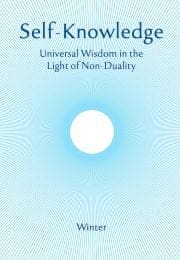The Yogic Conception of the Soul
What is the soul? Does such an entity exist, or is it merely a fiction of the religious imagination? Scientists are mainly concerned with the observation of objective phenomena, and are often inclined to dispense with the idea of a soul, or even of a mind in the generally accepted sense. A common tendency is to trace the functions and qualities that most of us might attribute to a soul or a mind, to the behaviour of nervous tissues lodged in the skull.
This scepticism as regards ‘soul’ is nothing new. In the time of the classical philosopher, Shankara, around 700 AD, there were already those who wished to reduce all the phenomena of consciousness to reactions of the body to external stimuli, and who also dismissed the hypothesis of either a soul outliving the body or a mind as we normally understand it.
Shankara pointed out that it was difficult to maintain this view. While the body changes from childhood to old age and is in fact changing minutely all the time, we have a sense of ourselves today, perhaps in old age, as identically the same person as we were as children. He regarded this element of changeless consciousness in us as eternal and also as immortal, from the mere fact of its being changeless. We feel ourselves to be the same perceiver in quite different times and circumstances, as is evidenced by the mere feeling ‘It was I who previously saw this.’ The presence within us of a changeless and in fact eternal and immortal consciousness separate from the body supplies, on Shankara’s view, the only possible explanation of memory.
The changes in the body are so slow that we do not notice them day to day, which encourages the illusion that the body is a solid object. It is only when we see a person after a long time that the transient nature of the body comes home to us. The writer remembers having seen a certain great singer early in his career, and then allowing some thirty years to pass before attending another of his performances—and being taken by surprise at the changes to his appearance wrought by time (as he, no doubt, would have been had the situation been reversed). But on Shankara’s doctrine, which is a reproduction of that of the Upanishads, the fundamental consciousness in both the singer and the writer was quite separate from the body and not really enclosed or limited by the evanescent ever-changing body. It had in fact remained identical and unlimited, the same immortal entity present in both the singer and the writer and in everyone and everything else. Consciousness in this eternal, changeless form, unlimited either in time or space, present always in all of us, is called the witness-consciousness. It is ever-present as the core of the human personality. But it is not to be identified with the ever-changing consciousness of everyday experience, of which it is the support.
Subscribe or enrol for free guest access to read all of this article and Self-Knowledge online.


